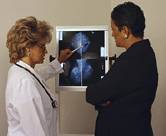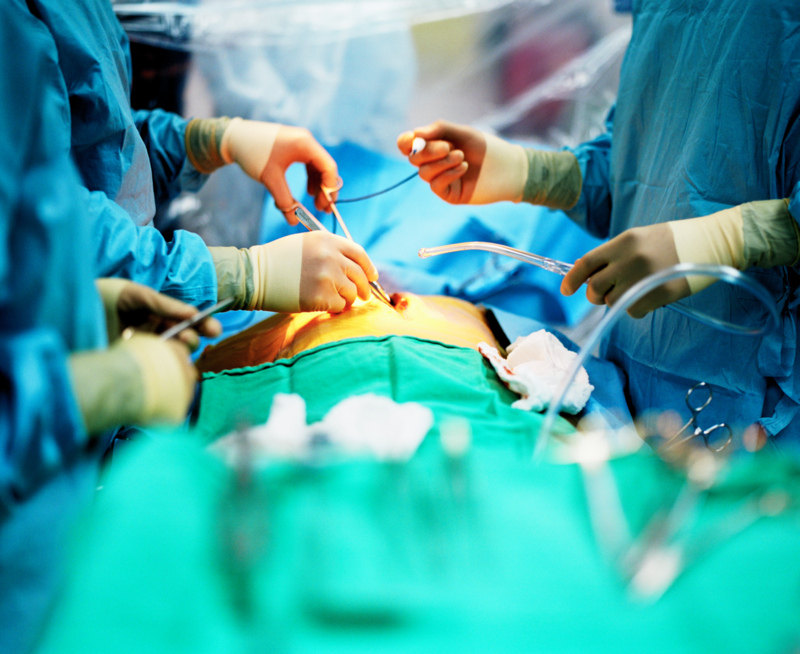
WEDNESDAY, March 21 (HealthDay News) — Two long-term studies from the Netherlands suggest that routine mammography screening does save women’s lives.
One of the longest national breast cancer screening programs in the world led to a significant drop in deaths and caused limited harm, such as false-positive results and over-diagnosis, according to one of the new studies.
Another study found that regular mammography screening helped save lives even after adjusting for improvements in breast cancer treatment.
“These results show why mammography is such an effective screening tool,” said one U.S. expert, Dr. Kristin Byrne, chief of breast imaging at Lenox Hill Hospital in New York City. She was not involved in the new research.
Both studies were slated to be presented Wednesday at the European Breast Cancer Conference in Vienna, Austria.
In one study, researchers analyzed data collected during the first 20 years of the mammography breast cancer screening program launched in the Netherlands in 1989.
“Compared with the pre-screening period 1986 to 1988, deaths from breast cancer among women aged 55-79 fell by 31 percent in 2009,” Jacques Fracheboud, a senior researcher at the Erasmus University Medical Center in Rotterdam, said in a meeting news release.
“We found there was a significant change in the annual increase in breast cancer deaths: before the screening program began, deaths were increasing by 0.3 percent a year, but afterwards there was an annual decrease of 1.7 percent,” he added. “This change also coincided with a significant decrease in the rates of breast cancers that were at an advanced stage when first detected.”
Most Dutch women seemed amenable to regular mammography. Over the first 20 years of the screening program, 16.6 million personal invitations for breast cancer screening were sent to 3.6 million women ages 50-75 (the present screening age in the Netherlands). Overall acceptance during that time was 80 percent, increasing from 73.5 percent in 1990 to 81.5 percent in 2009.
During that time, 13.2 million breast cancer screening examinations were performed among 2.9 million women (an average of 4.6 examinations per woman), resulting in nearly 180,000 referral recommendations, nearly 96,000 biopsies and more than 66,000 breast cancer diagnoses.
For a woman who was 50 in 1990 and had 10 screenings over 20 years, the cumulative risk of a false-positive result (something being detected that turned out not to be breast cancer) was 6 percent.
Over-diagnosis (detection of breast tumors that would never have progressed to be a problem) occurred in 2.8 percent of all breast cancers diagnosed in the total female population and 8.9 percent of screening-detected breast cancers.
The study also found that the screening program had reasonable costs.
“We are convinced that the benefits of the screening program outweigh all the negative effects,” Fracheboud said.
Byrne agreed that the statistics were impressive. Regular screening “decreases deaths by over 30 percent, [with] limited harm and reasonable costs. Additionally, cancers are detected at an earlier stage, which means not only decreased mortality but also morbidity; the patient may not have to have chemotherapy or a mastectomy,” she noted.
In the second study, Dutch researchers found that even after accounting for improved treatments for breast cancer, mammography screening programs still saved a significant number of lives.
The researchers found that adjuvant therapy (treatment given in addition to primary therapy such as surgery) reduced breast cancer deaths by about 14 percent in 2008 compared to no treatment. However, they also found that breast cancer screening every two years reduced deaths by an additional 15.7 percent.
Using a computer modeling program, the researchers estimated that adjuvant treatment reduced breast cancer deaths from 67.4 to about 58 per 100,000 women years (cumulative years during which study participants were followed). The addition of screening for women ages 50-75 further reduced deaths to about 49 per 100,000 women years. This means that adjuvant therapy plus screening reduced deaths by a total of 27.4 percent.
If screening were extended to women ages 40-49, deaths would be reduced by a further 5.1 percent, according to Rianne de Gelder, a graduate student and researcher at the Erasmus University Medical Center.
“The effectiveness of breast cancer screening has been heavily debated in the last couple of years. One of the arguments that critics have is that, since breast cancer patients can be treated so effectively with adjuvant therapy, the relative effects of screening become smaller and smaller,” de Gelder explained in a meeting news release.
However, “our study shows that, even in the presence of adjuvant therapy, mammography screening (between age 50 and 75) is highly effective in reducing breast cancer deaths and, in fact, is slightly more effective than adjuvant treatment,” she said. For that reason, “screening women of these ages should definitely continue.”
Byrne agreed, noting as well that the sometimes onerous side effects of chemotherapy treatment make catching tumors early via mammography even more crucial. Chemotherapy can “result in a significant decrease in quality of life,” she said. “However, this study shows, even in the presence of adjuvant therapy, mammography screening reduces breast cancer deaths.”
De Gelder and her colleagues said further investigation is still needed to determine “the ideal age for starting screening, taking into account not only the effects, but also the risks and costs of extending the lower age limits.”
In the United States, the U.S. Preventive Services Task Force in 2009 advocated that women not begin mammography screening until age 50, a decision that touched off an ongoing debate over whether women in their 40s should get such screening. Groups such as the American Cancer Society still support regular mammography screening for women ages 40 to 49.
Findings presented at medical meetings are typically considered preliminary until published in a peer-reviewed journal.
More information
The U.S. National Cancer Institute has more about breast cancer screening.

